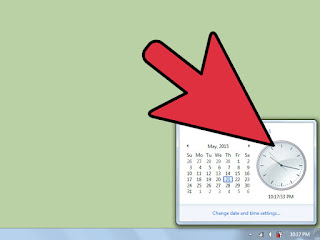How to Hack a Computer ??
Method-1 (Bypassing a login on Windows)
1
Understand what this will accomplish. While Windows 10 doesn't allow you to abuse the Administrator account like you could in past renditions of Windows, you can use a Windows 10 installation drive and Command Prompt to add a new administrator-enabled user that can see the main account's files and folders.
- You won't be able to change the password that the main account uses, but you should be able to access, edit, and copy virtually anything from the main account.
2
Create a Windows 10 installation tool. Make sure that you have a blank flash drive that is at least 8 gigabytes in size, then do the following:[1]
- Attach the flash drive to your computer.
- Open the Windows 10 download page.
- Click Download tool now
- Double-click the downloaded tool.
- Follow the on-screen prompts, making sure to use your flash drive as the installation location.
- Leave the flash drive plugged in after the creation process completes.
3
Change your computer's boot order. This is necessary in order to prompt your computer to start from the flash drive rather than the hard drive:[2]
- Access your computer's BIOS.
- Find the "Boot Order" section in the Boot or Advanced tab.
- Select your flash drive's name, then press + (or the "Up" key listed in the legend on the right side or bottom of the screen) until the flash drive is at the top of the list.
- Save and exit using the key(s) listed in the legend on the right or bottom of the screen.
4
Open Command Prompt. On the setup screen, press ⇧ Shift+F10. You should see the Command Prompt window open.[3]
5
Replace Utility Manager with Command Prompt. Utility Manager is a service which has an icon available on the lock screen. By replacing Utility Manager with Command Prompt, you'll be able to execute administrator-level functions without having to log in:[4]
- Type move c:\windows\system32\utilman.exe c:\windows\system32\utilman.exe.bak into Command Prompt.
- Press ↵ Enter
- Type copy c:\windows\system32\cmd.exe c:\windows\system32\utilman.exe into Command Prompt.
- Press ↵ Enter
6
Restart your computer. Type wpeutil reboot into Command Prompt, then press ↵ Enter. At this point, you'll need to remove your installation media from the computer in order to ensure that Windows reboots to the login screen rather than back into the installation setup.[5]
- If Windows boots into the installation setup before you have a chance to remove the installation flash drive, remove the flash drive and then press (or press and hold) your computer's hardware Power button.
7
Open Command Prompt. Once the lock screen loads, click the "Utility Manager" icon, which resembles a dial with a right-facing arrow in the middle, in the bottom-right corner of the screen. A Command Prompt window will open.
- If you don't replace Utility Manager with Command Prompt, clicking this icon will open the Utility Manager instead.
8
Create a new user. Once Command Prompt opens, do the following:[6]
- Type in net user name /add making sure to replace "name" with a username of your choice.
- Press ↵ Enter.
- Type in net localgroup administrators name /add again replacing "name" with the name of the user you just created.
- Press ↵ Enter
9
Restart your computer again. Click the Power
icon, then click Restart when prompted. Your computer will restart one final time, after which point you'll be able to log in with your new administrator account.
10
Log in with your new user. Once Windows finishes restarting, you'll be able to use the account you created to log in:
- Select your new user's name in the lower-left side of the screen.
- Click Sign In
- Wait for Windows to finish setting up your new user account.
11
View the main account's files. You can see all of the files and folders from the main user account by doing the following:
- Open File Explorer. You can also press ⊞ Win+E.
- Scroll up and click This PC in the left-hand column.
- Double-click the computer's hard drive.
- Double-click the Users folder.
- Double-click the main account's user folder.
- Click Continue when prompted, then wait for the user's folders to load.
- Browse the user's files and folders as needed.



Comments
Post a Comment